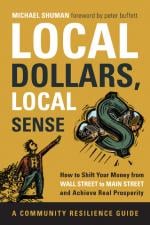 The eleventh chapter of The Power of Nonviolence: Writings by Advocates of Peace contains Albert Camus‘ 1946 essay Neither Victims nor Executioners. This week we discuss the third part of the essay, Saving Our Skins. Camus wrote this 16-page essay as World War II had just ended, and it seemed as if the Soviet Union and the United States were dragging the planet into the horrors of a third world war. Eleven years later, he would win the Nobel prize for literature.
The eleventh chapter of The Power of Nonviolence: Writings by Advocates of Peace contains Albert Camus‘ 1946 essay Neither Victims nor Executioners. This week we discuss the third part of the essay, Saving Our Skins. Camus wrote this 16-page essay as World War II had just ended, and it seemed as if the Soviet Union and the United States were dragging the planet into the horrors of a third world war. Eleven years later, he would win the Nobel prize for literature.
Though Camus goes into a lot of detail about the players in the Socialist Party’s rise in France at the time, this section is really not about Socialists. Camus is more interested in the reaction of people when they are faced with the choice of committing the violence inherent in their philosophy. As Camus states:
I have chosen this example not to score off the Socialists but to illustrate the paradoxes among which we live. To score off the Socialists, one would have to be superior to them. This is not yet the case.
Camus saw the Socialist having to make the choice of all ideologues. The first path is deciding that the ends justify the means so that murder is justified. The second path is to proclaim that ideology is not a justification for murder. Camus described what happens when the second path is chosen:
If the second, they will exemplify the way our period marks the end of ideologies, that is, of absolute Utopias which destroy themselves, in history, by the price they ultimately exact. It will then be necessary to choose a most modest and less costly Utopia. At least it is in these terms that the refusal to legitimise murder forces us to pose the problem.
Related articles
- Albert Camus’ Neither Victims nor Executioners: Century of Fear (peacecouple.com)
- Saving Our Skins: Camus’ Neither Victims nor Executioners (peacecouple.com)
Related articles
- Albert Camus’ Neither Victims nor Executioners: Century of Fear (peacecouple.com)


 Before I reached the list of sale items. I saw an announcement for an upcoming March 2012 book:
Before I reached the list of sale items. I saw an announcement for an upcoming March 2012 book: 